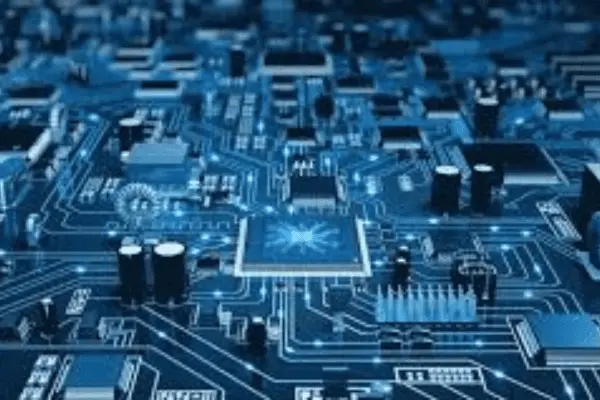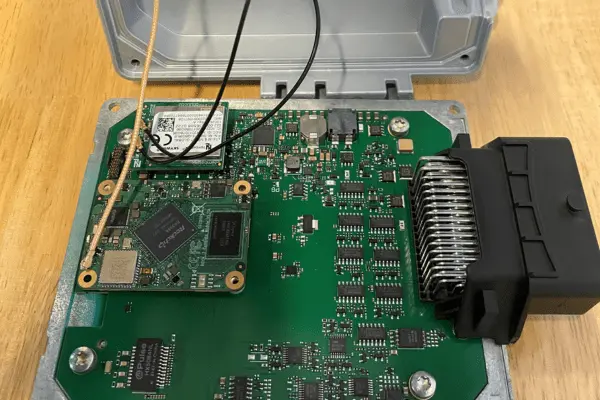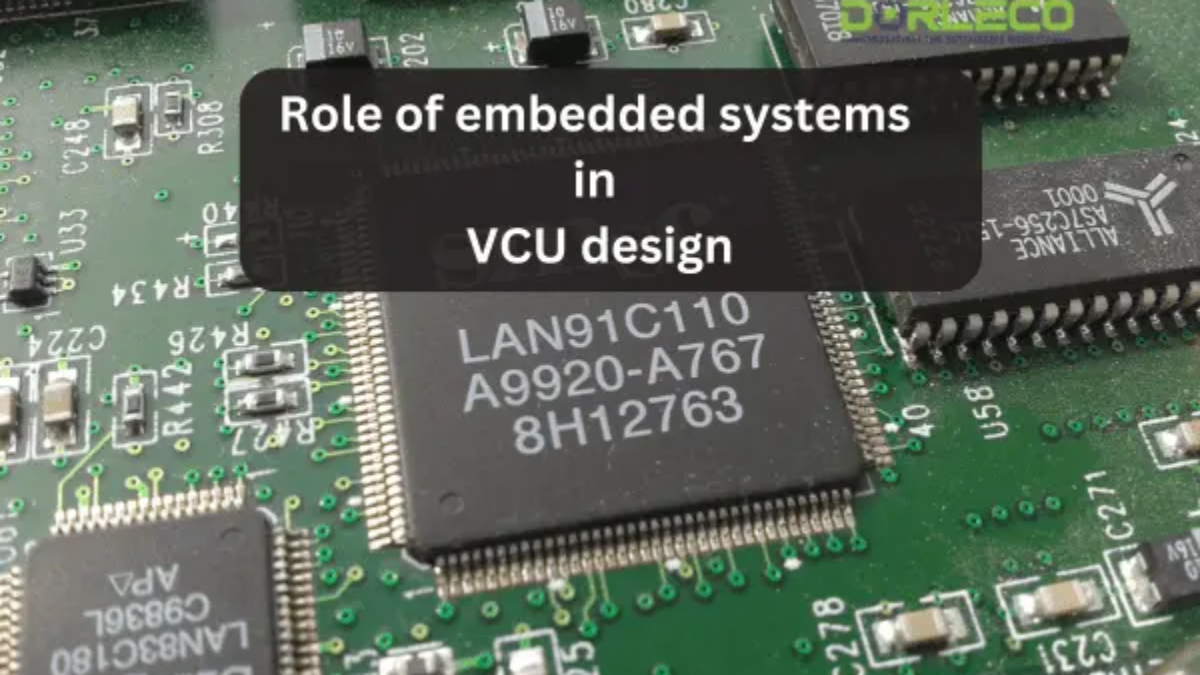INTRODUCTION
Embedded technologies have a significant role in the design and functionality of modern automotive Vehicle Control Units (VCUs). The vehicle control unit (VCU) is a key component that controls a car’s engine, gearbox, brakes, and other subsystems. Embedded systems contribute the following to VCU design:
1. Integration of Sensors
VCUs’ embedded systems are in charge of combining data from a variety of sensors throughout the vehicle. This includes data from accelerometers, gyroscopes, wheel speed sensors, engine sensors, and other sensors that provide the VCU with the knowledge it requires to make decisions.
2. Data Management and Control:
The VCU’s embedded processors assess incoming sensor data to make real-time decisions about the vehicle’s operation. Regulating engine settings, adjusting transmission shifts, and monitoring brake systems are all necessary to ensure peak performance and safety.
3. Communication protocols:
VCUs frequently need to communicate with other electronic control units (ECUs) in the vehicle, such as the ABS, Transmission Control Unit (TCU), and Engine Control Unit. Embedded systems handle the implementation of communication protocols, ensuring that data transfers between subsystems run smoothly.
4. Identifying and repairing faults:
Embedded systems are vital for implementing diagnostic functionalities in the VCU. In addition to identifying flaws or malfunctions, they monitor the state of several automotive systems and components and generate diagnostic trouble codes (DTCs) to help technicians locate and resolve issues during maintenance.
5. Power management:
Embedded systems in the VCU control power distribution. To enhance energy efficiency, they control power utilization and ensure components receive adequate power supply.
6. Functional Safety:
Safety is critical in car systems. VCU embedded systems are designed to meet functional safety requirements such as ISO 26262. They implemented safety precautions and redundancy to ensure that critical operations continue uninterrupted, even in the case of faults or malfunctions.
7. Software Updates and Upgrades:
Over-the-air (OTA) updates are enabled by embedded systems, which allow manufacturers to update the VCU’s software remotely to improve performance, add new features, or solve security problems without having to physically visit a service center.

8. Advanced Driver Assistance Systems (ADAS) Integration:
VCUs commonly interact with ADAS components to increase vehicle safety by providing features like adaptive cruise control, lane-keeping assistance, and collision avoidance. These cutting-edge technologies are more easily integrated thanks to embedded systems.
Advantages of embedded systems in VCU design.
The incorporation of technologies into Vehicle Control Units (VCUs) provides numerous benefits that improve the overall efficacy, security, and usefulness of modern automobiles. Here are a few major advantages:
1. Real-time Processing:
Embedded systems’ fast and real-time processing capabilities allow VCUs to make quick decisions based on sensor data. This is critical for key activities like stability control, braking, and engine control.
2. Optimized performance:
Engine performance, gearbox shifts, and brake systems are just a few of the vehicle aspects that can benefit from the use of embedded systems. This leads to improved reaction, fuel efficiency, and overall vehicle performance.
3. Integrating Complex Functions:
VCUs are responsible for a wide range of duties, including advanced driver assistance systems (ADAS) and engine management. Embedded systems facilitate the integration of these complex duties by ensuring smooth communication among the car’s many components.
4. Reduced size and weight:
The lightweight and compact nature of embedded systems helps to reduce the overall size and weight of VCUs. This is especially important in the automotive industry, where weight and space limits are critical for both fuel efficiency and vehicle design.
5. Energy efficiency:
Power management within the VCU architecture is enabled by embedded systems, which ensure that each component receives the required power while using the least amount of energy feasible. As a result, the car’s total energy efficiency improves.
6. Stability and reliability:
embedded system design improves VCU stability and reliability by using redundant and fault-tolerant components. It is critical to ensure that important vehicle functions continue regardless of malfunctions or breakdowns.
7. Diagnostic capabilities:
VCU’s embedded technologies provide advanced diagnostic capabilities. They generate diagnostic trouble codes (DTCs), which aid in the early discovery and resolution of problems during maintenance, and they constantly monitor the condition of the vehicle’s components.
8. Adaptability and Flexibility:
Manufacturers can add new features, improve performance, and correct security problems in embedded systems with software updates and upgrades, all without physically altering the VCU design.
9. Cost-effectiveness:
Embedding technologies in VCUs can save expenses throughout the vehicle’s lifecycle, even with initial development costs. Long-term cost savings may emerge from the ability to remotely update software, immediately diagnose faults, and improve performance without the need for hardware modifications.
10. Compliance with Standards:
Embedded systems in VCUs can comply with industry standards and laws, including functional safety criteria (such as ISO 26262). This ensures that autos meet the safety and performance criteria established by regulatory organizations.

Disadvantages of embedded systems in VCU design
Although embedded systems are necessary for the operation and design of vehicle control units (VCUs), employing them has several drawbacks. To overcome difficulties and increase the overall performance and dependability of automotive systems, it is necessary to consider these constraints. Some of the downsides are:
1. Software complexity:
Embedded systems in VCUs can run exceedingly complex applications. Complex software is difficult to manage and debug, and errors or faults can have major consequences for a vehicle’s performance and safety.
2. Security Issues:
The possibility of cyber security problems increases as cars become more networked. Embedded systems are vulnerable to hacking and unauthorized access, threatening drivers’ privacy and safety. Strong cyber security protections are necessary.
3. Limited upgradeability:
Although some embedded systems accept software upgrades, there may be hardware limitations that impede the addition of new technology. Hardware component updates can be complicated and costly, and they may cause obsolescence issues.
4. Rigid Design:
Specific functionality is commonly considered when creating embedded systems. Adapting to new requirements or technological breakthroughs may be challenging without significant changes to the hardware or software architecture.
5. The cost of development and maintenance:
It can be expensive to create and maintain embedded systems for VCU designs. Higher total vehicle expenses may result from both the initial development cost and the need for ongoing maintenance and updates.
6. Vendor Dependence:
When obtaining embedded system components, automakers may need to rely on specific manufacturers or providers. This reliance may limit adaptability and increase susceptibility to supply chain disruptions or changes in vendor affiliations.
7. Limited Processing Capacity:
As vehicle functionality advances, the processing capability of embedded systems may become a limiting factor. High computing needs may put a strain on embedded processors, especially when it comes to complex AI algorithms and autonomous driving.
8. Integration Challenges:
It might be challenging to combine embedded systems with other electronic components found in cars. Careful control of compatibility issues and communication protocols is required to ensure smooth operation and avoid system conflicts.

9. Environmental challenges:
Harsh external conditions, such as extreme temperatures and vibrations, can have an impact on the dependability of an embedded system. For automotive applications, it is critical to ensure that these systems are resistant to such circumstances.
10. Long development cycles:
Because of the stringent testing and certification procedures, embedded system development cycles for automotive applications can be lengthy. As a result, cutting-edge technology may not be applied as quickly as intended.
Conclusion:
Finally, embedded systems play a critical role in the design of vehicle control units (VCUs), considerably adding to the efficiency, safety, and overall performance of modern cars. Embedded systems are the technological backbone that allows the integration, processing, and control of various processes inside the VCU design. From real-time sensor data processing to smooth communication between multiple subsystems, embedded systems play a critical role in molding the vehicle’s behavior.
The preferences of implanted frameworks in the VCU plan are clear in terms of execution, vitality, effectiveness, and flexibility. These systems enable the integration of complicated functions, ensuring that vehicles perform with precision and reactivity. The ability to add diagnostic features improves dependability, while over-the-air updates and upgrades help with long-term cost-effectiveness and the adoption of new technologies.
However, it is critical to recognize certain disadvantages associated with embedded systems, such as software complexity, security problems, and potential limitations in upgradeability. Addressing these issues is critical to guaranteeing the ongoing progress and resilience of embedded systems in VCU design.
As technology advances, continued research and development activities are directed toward reducing downsides, strengthening cyber security measures, expanding processing power, and increasing adaptability to suit the changing demands of the automobile sector. In essence, embedded systems in VCU design are a dynamic and expanding field that is shaping the future of intelligent and connected cars by combining innovation with the need for strong safety and reliability criteria.
Check out all VCU-related products and services here, and for further inquiries, you can contact us at info@dorleco.com.
ToughCase (Vehicle Control Unit)

